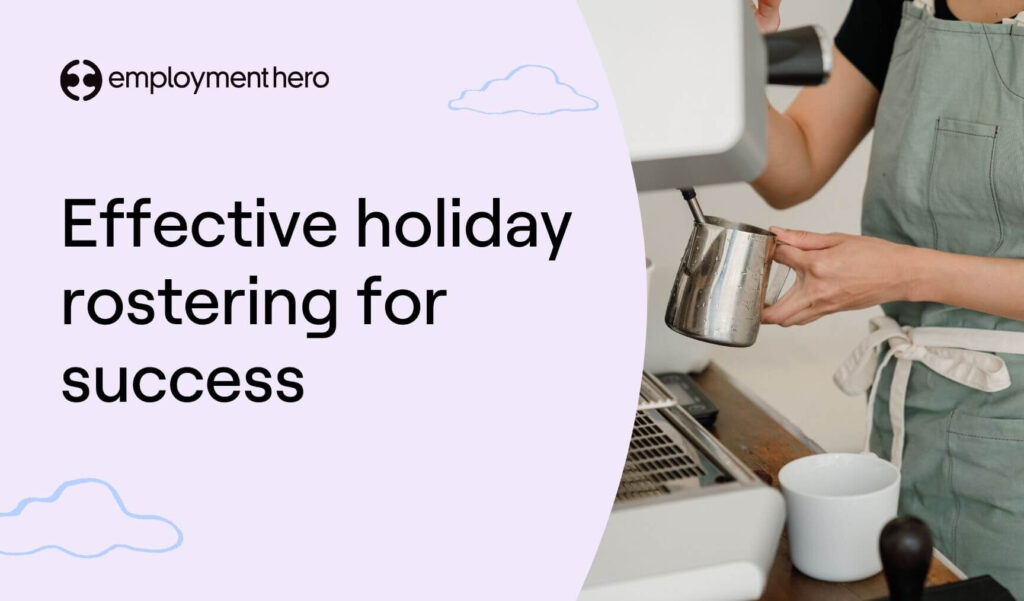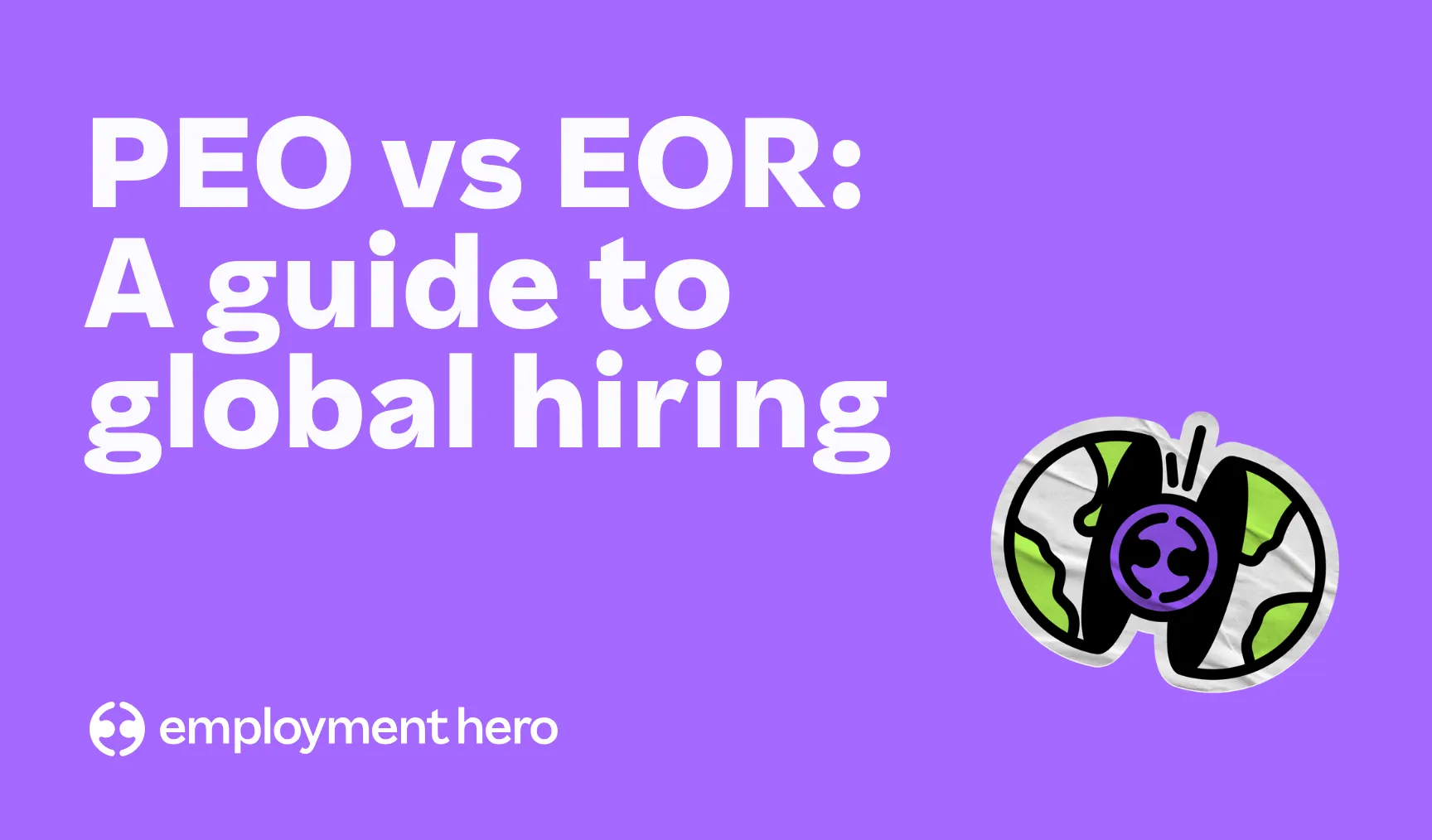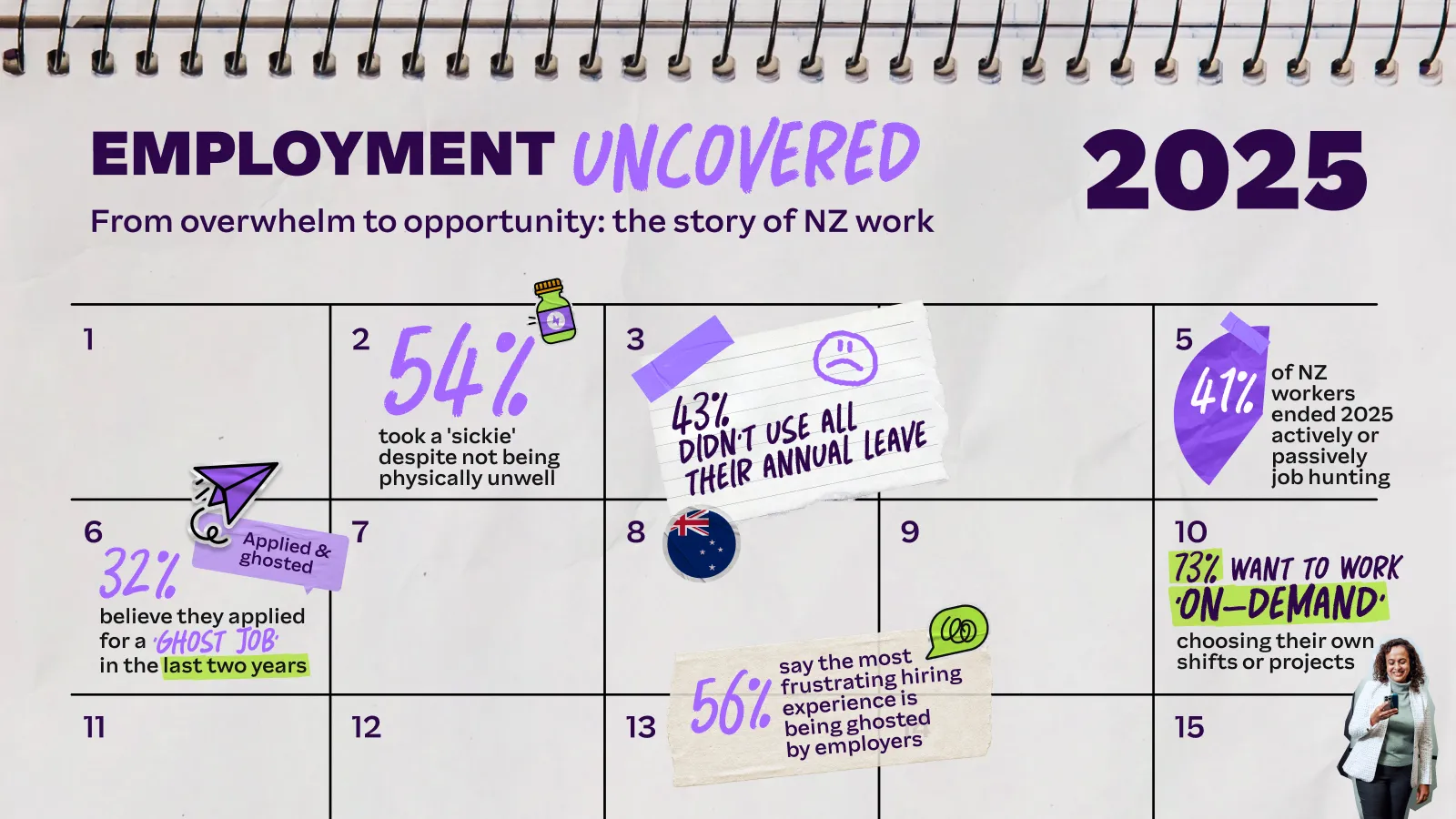Holiday rostering for success this summer
Planning your holiday roster? Find out how to transform your holiday roster into a tool for success, rather than a headache.

Contents
While many are busy planning their summer break, business owners and managers may find themselves facing intense pressure from the added complexities of the holidays. That’s especially true for those in the hospitality and retail industry – and anyone tackling holiday rostering.
Between unpredictable spikes (or lulls) in customer demand, competing staff leave requests, and time-and-a-half public holiday wages, holiday rostering can be make or break for businesses during this period. If it’s done poorly, it can be costly financially, reputationally and in some cases, legally.
So if this time of year has you feeling more frazzled than festive – the tips below can help transform your holiday rostering into a strategic tool for success, rather than another headache.
First things first: how effective was last year’s roster?
A simple place to start is by reflecting on the effectiveness of last year’s holiday roster.
But when you’re already run off your feet juggling the day-to-day, stock takes, invoicing and everything in between – it can be tempting to rely on intuition or past experience without delving into the specifics of last year’s performance.
It pays to review your own unique customer data, as sales trends can vary widely depending on the company.
Gain roster insights from your point of sale system (POS)
Your POS is the best source of truth for gathering insights about just how silly last year’s holiday season was for you.
With this data handy, consider the following questions:
- Which days were busiest?
- Did you have enough staff rostered then?
- Did you need to call in casual staff to cover lunch breaks?
- Were there any days that were particularly slow?
- What factors might make it different (or the same) this year?
Next, adapt this year’s roster to suit
Based on your answers, you may need to pencil in a few extra team members ahead of time to avoid the headache. If you need to hire casuals over the Christmas period, take a quick look at our Christmas casuals checklist to avoid any hiccups.
Or perhaps last year’s data shows you had more staff than you needed – in which case, you could make significant savings this time around by rostering on skeleton staff only.
Hero Tip: These quieter days are ideal for any admin or housekeeping tasks, such as restocking, merchandising, food preparation and general clean up.
We recommend looking at this data a few weeks out from the holiday period and paying close attention to the following:
- Last year’s hour-by-hour sales patterns
- Your quietest and busiest times each day
- Your sales-to-staff ratios during each time period
- Any special events that may have affected your trade
Holiday rostering watch-outs for hospitality and retail
With seasonal events and more people off work, cafes, restaurants, bars and retail stores typically see large increases in trade in the lead up to Christmas.
As Wordline’s Chief Sales Officer, Bruce Proffit explains:
“Clothing stores have a long history of peak selling on Saturday afternoons, while in bookstores this occurs late morning Saturday,” Proffit explains.
“Liquor stores tend to peak near 5pm on Fridays, and restaurants/cafés near midday Sunday.”
Understanding your businesses unique trading patterns can help you make informed decisions about staffing needs, to maximise efficiency and revenue.
Other factors to take into account:
- Allocating the right staff for opening and closing shifts.
- Ensuring you have enough staff to handle deliveries and restocking.
- The potential need to extend your trading hours.
- Covering changes in peak times (like lunch breaks or after-work hours).
- Clear processes for last-minute leave requests.
For a deep dive into consumer purchasing trends, check out the full insights from World Line.
Clearly, there are several factors to consider when rostering in these industries. Given this, it can be helpful to create a range of different roster templates for various scenarios (think wet weather, special events, public holidays). This will help you ensure you’re prepared for any number of scenarios that may arise, so you can capitalise on each opportunity that comes your way.
Choose your team wisely for effective rostering
Think of your rosters like selecting players in a rugby team for an important game – you need a good mix of experienced players and fresh talent, and some extra team mates to back you up if anyone has to come off the field.
Schedule experienced staff during known peak times and ensure you always have at least one senior team member working. For example, if you’ll be serving or selling alcohol, you’ll need to make sure you’ve rostered on your certified staff (and check their licensing is still up to date!). And if you’re going to need your team to open and close your venue, make sure staff with the relevant training are allocated to those shifts.
Other things to consider for effective rostering:
- Build in flexibility for unexpected busy periods
- Schedule enough time for proper setup and closing
- Train your staff to handle multiple tasks in case someone calls in sick
- Keep a list of reliable, on-call or casual staff for last minute needs
- Make sure your team contact details are up to date
- Clearly communicate your expectations for staff around leave requests, including sick days.
By making sure you roster staff with the appropriate training and skill set for each shift, you’re less likely to be caught off guard by unexpected changes, increased demand or last minute customer requests.
Be proactive about leave requests
Holiday leave requests can be a major source of stress and conflict if not handled properly.
A few simple ways to get ahead of leave requests below:
- Set a clear deadline for leave requests (we recommend at least six weeks before the holiday period).
- Create a fair system for managing leave requests that fall on competing dates like Christmas and New Year’s Eve.
- Consider offering incentives for working less popular shifts (e.g., New Year’s Day or New Year’s Eve).
- Use Employment Hero’s employee management system to manage requests.
By communicating proactively with staff about leave requests and business needs, you’ll be better prepared to turn the holiday period into an opportunity, rather than a headache.
Prepare for public holiday rules and wages
Effective rosters also need to account for public holiday rules and wage requirements.
To ensure you’re prepared for these public holidays, start by refreshing your memory on the 12 annual holidays in New Zealand below.
- New Year’s Day (1 January)
- Day after New Year’s Day (2 January)
- Waitangi Day (6 February)
- Good Friday (dates vary)
- Easter Monday (dates vary)
- ANZAC Day (25 April)
- King’s Birthday (first Monday in June)
- Matariki (dates vary)
- Labour Day (fourth Monday in October)
- Christmas Day (25 December)
- Boxing Day (26 December)
- Regional Anniversary Day (date decided locally)
Here’s how to keep your costs in check on public holidays without compromising service quality or productivity:
- Use real-time cost tracking to stay on top of your wage expenses
- Automatically process public holiday payments
- Schedule new staff during quieter periods
- Adjust shift lengths to match your busy periods
- Keep an eye on your sales data and be ready to adjust staffing levels
If you’re unsure about any public holiday requirements, you’ll find detailed guidance on the Employment New Zealand website.
Factors beyond your control: weather and events
Kiwi weather can be unpredictable, especially over the Christmas period – so it pays to be prepared for every scenario, especially if your business is weather dependent. Keep an eye on the MetService website for weather predictions in your area.
Likewise, local events like Christmas parades, New Year’s celebrations and music festivals can cause major changes in customer demand. Make sure you know what’s coming up in your region so you’re as prepared as possible.
We recommend keeping an eye on local council websites so you can adjust your roster based on any major events near you. Don’t forget to check the council sites for any potential road closures in your area too.
Auckland Council events Wellington Council events Christchurch City Council events
You’ll find a complete list of council websites here.
Maximise staff productivity
Our Wellness at Work Report 2024 found that taking steps to mitigate employee burnout can maximise staff productivity and importantly, reduce turnover during critical periods.
The intensity of the holiday period can amplify the potential for burnout, which can affect staff performance, service quality and customer satisfaction. To prevent this, ensure you allocate enough time on the roster for staff to recover both during and between shifts.
Consider some of the strategies below:
- Build adequate break times into your rosters (and allow a budget for on-call support staff, just in case!).
- Check specifics in your employee agreements: it’s easy to presume everyone is on a standard contract, but make sure you check if there are any individual provisions you need to consider that may have been negotiated when the employee was first hired.
- Maintain clear communication about when staff can take breaks, duration, and what they need to do if they need time off or sick leave.
- Act in good faith toward your employees when developing your roster.
- Verbalise your appreciation for those working key dates like Christmas and New Years, and consider thanking the team with a team lunch or simple gift.
Make rostering easier with Employment Hero
Holiday rostering doesn’t have to be overwhelming. Employment Hero’s complete rostering solution gives you the tools to create effective, adaptable rosters.
Our platform helps you:
- Create and adjust rosters
- Track wage costs in real-time
- Automatically process public holiday payments
- Manage shift swaps easily
- Boost your compliance confidence when managing your employer obligations
Want to try it for yourself? Book a demo today. We’ll show you how to make this holiday season your smoothest yet.
Disclaimer: The information in this article is current as at 20 November 2024, and has been prepared by Employment Hero Pty Ltd (ABN 11 160 047 709) and its related bodies corporate (Employment Hero). The views expressed in this article are general information only, are provided in good faith to assist employers and their employees, and should not be relied on as professional advice. The Information is based on data supplied by third parties. While such data is believed to be accurate, it has not been independently verified and no warranties are given that it is complete, accurate, up to date or fit for the purpose for which it is required. Employment Hero does not accept responsibility for any inaccuracy in such data and is not liable for any loss or damages arising either directly or indirectly as a result of reliance on, use of or inability to use any information provided in this article. You should undertake your own research and to seek professional advice before making any decisions or relying on the information in this webinar.
Related Resources
-
 Read more: PEO vs. EOR: A guide to global hiring
Read more: PEO vs. EOR: A guide to global hiringPEO vs. EOR: A guide to global hiring
Learn the key differences between a PEO and an EOR. Discover why an EOR is the smarter, safer way to…
-
 Read more: How to build a global team without a local entity
Read more: How to build a global team without a local entityHow to build a global team without a local entity
Learn how to streamline your hiring and expand your NZ business globally with an Employer of Record (EOR) without the…
-
 Read more: Employment Uncovered: Inside the Story of New Zealand Work in 2025
Read more: Employment Uncovered: Inside the Story of New Zealand Work in 2025Employment Uncovered: Inside the Story of New Zealand Work in 2025
Inside the story of NZ work in 2025. From rising ‘sickies’ to hiring fatigue, see how Kiwi work patterns are…






















